Despite being one of the wonders of the natural world, spider silk’s transparent nature renders it virtually invisible to the human eye for most of the year. However, mist droplets on dewy mornings have the ability to elevate spiders’ astonishingly accomplished webs into one of our most obvious autumnal spectacles. And as spiders have colonised every terrestrial habitat, web-spotting is an activity that can be conducted virtually anywhere.
What are spider webs made from?
Spider webs are made from a substance called silk. Constructed from protein, this astonishingly versatile product combines immensely high tensile strength with tremendous elasticity. Furthermore, most spiders have three or four types of silk glands, which in turn produce material with subtly distinct properties and uses.
Each of these silk glands is associated with organs called spinnerets situated at the rear of a spider’s abdomen. Starting off as a syrupy liquid inside the spider’s abdomen, the silk forms when either pulled out by the spider’s legs or due to gravity. This stretching of the protein molecules causes them to bond together and solidify in long, fine strands.
Discover more about spiders
What are the different types of spider webs?
How a spider weaves the silk it produces can often give you an indication as to its family, with some webs so distinct they can even be narrowed down to a single species.
Classic web
Orb web spiders produce everyone’s idea of a classic web. These two-dimensional, vertical webs have the appearance of a bicycle wheel or dart board. The spider starts by forming a ‘Y’ shape, attaching strands to anchor points, with these first radials (or spokes of the wheel) functioning as a scaffold.
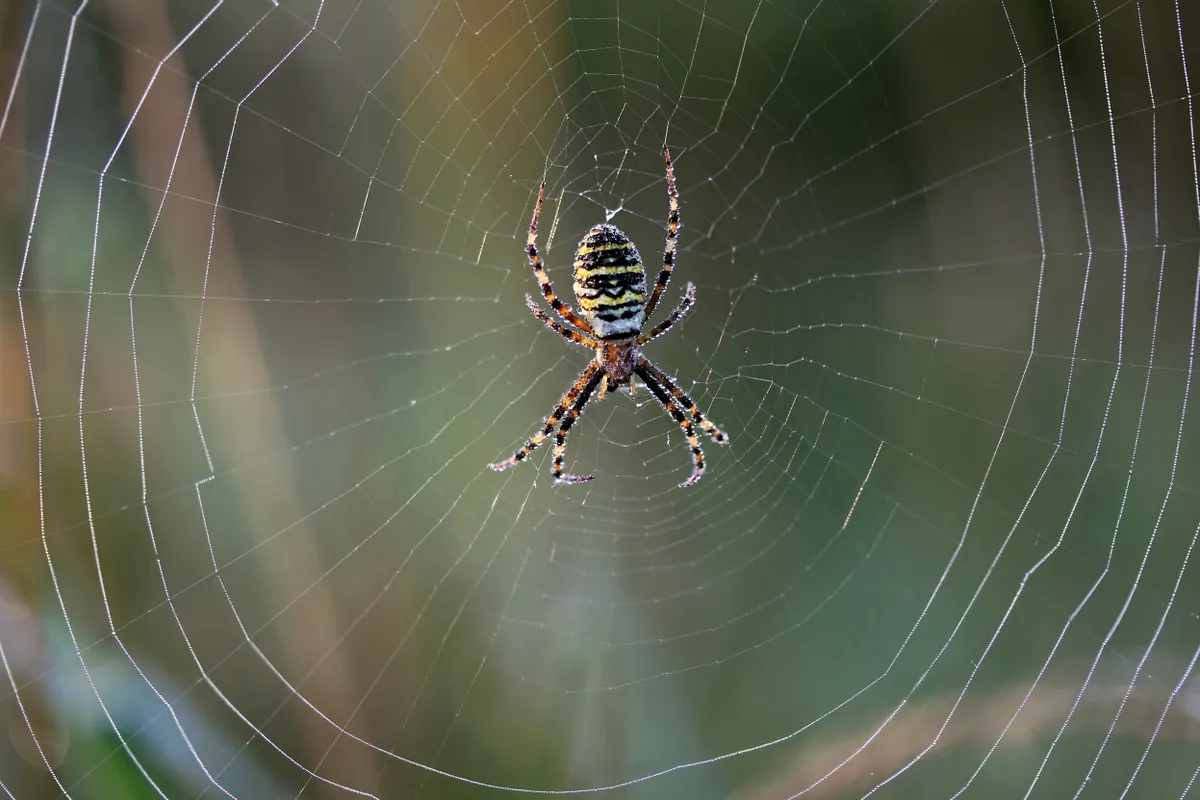
Once all the radials are in place, the spider will then lay down sticky threads to form the catching spiral. The British garden spider, for example, will then either wait in the centre of the web for dinner or hidden in nearby vegetation. As soon as an insect blunders into the sticky lair, the spider then rushes towards the source of the vibrations – principally along the non-sticky radial lines – before biting and wrapping its prey in silk to eat later.
Some orb web spiders, such as the wasp spider, add an extra band of silk called the stabilimentum to their creations. The precise function of this feature is unclear but theories abound, from helping to attract insects to acting as a warning to larger animals to avoid hitting the web.
Sheet webs
Sheet webs, by contrast, appear as densely woven and miniature silken hammocks that can carpet any variety of grassland and low bushes.
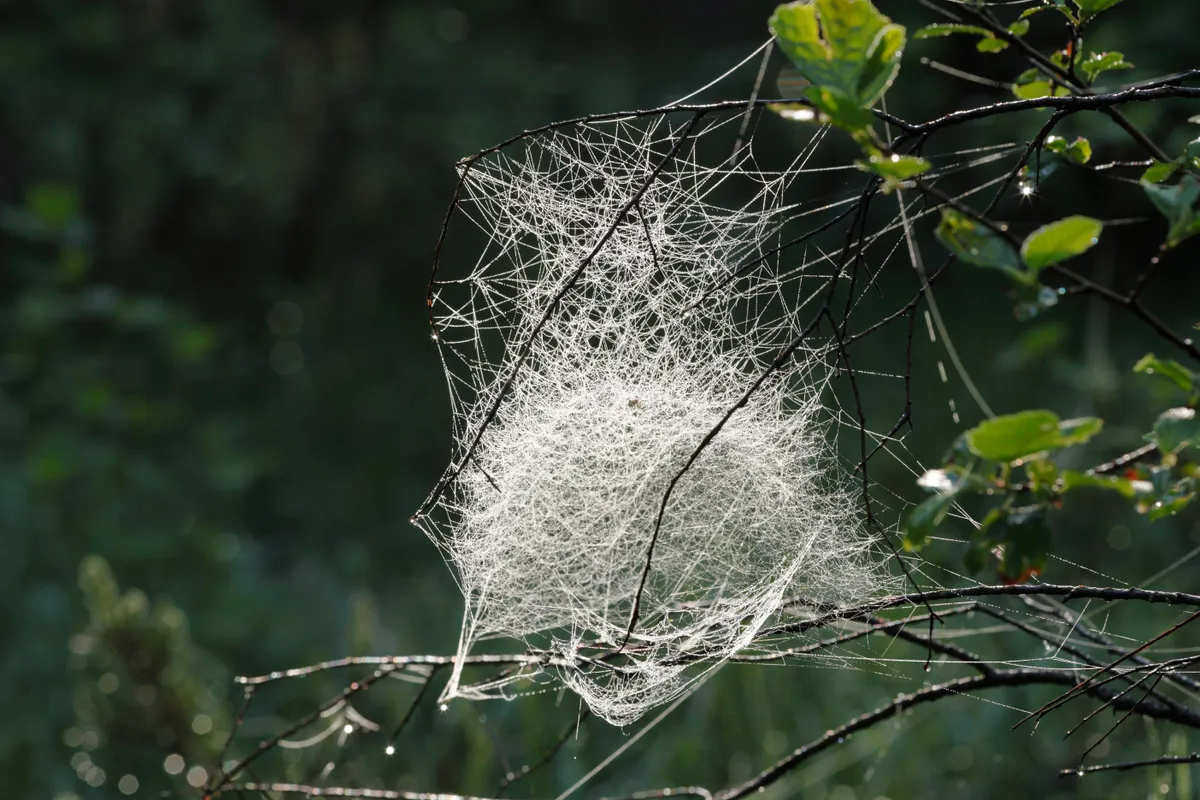
Produced by the family that includes the diminutive money spiders, the sheer number of these webs visible on a dewy morning can be mind-blowing. Placed horizontally, the webs are intended to collect insects that either land or fall onto them from above, while the spider waits patiently beneath the web, ready to pounce.
Tangle webs
So-called tangle webs are constructed by four of Britain’s spider families, and appear as a messy, three-dimensional jumble of threads. The best-known representative of this group is also the species famed for its house-squatting abilities: the daddy-long-legs spider (Pholcidae). Quite rare in this country 50 years ago, this prolific breeder has spread north thanks to the increase in centrally heated homes.
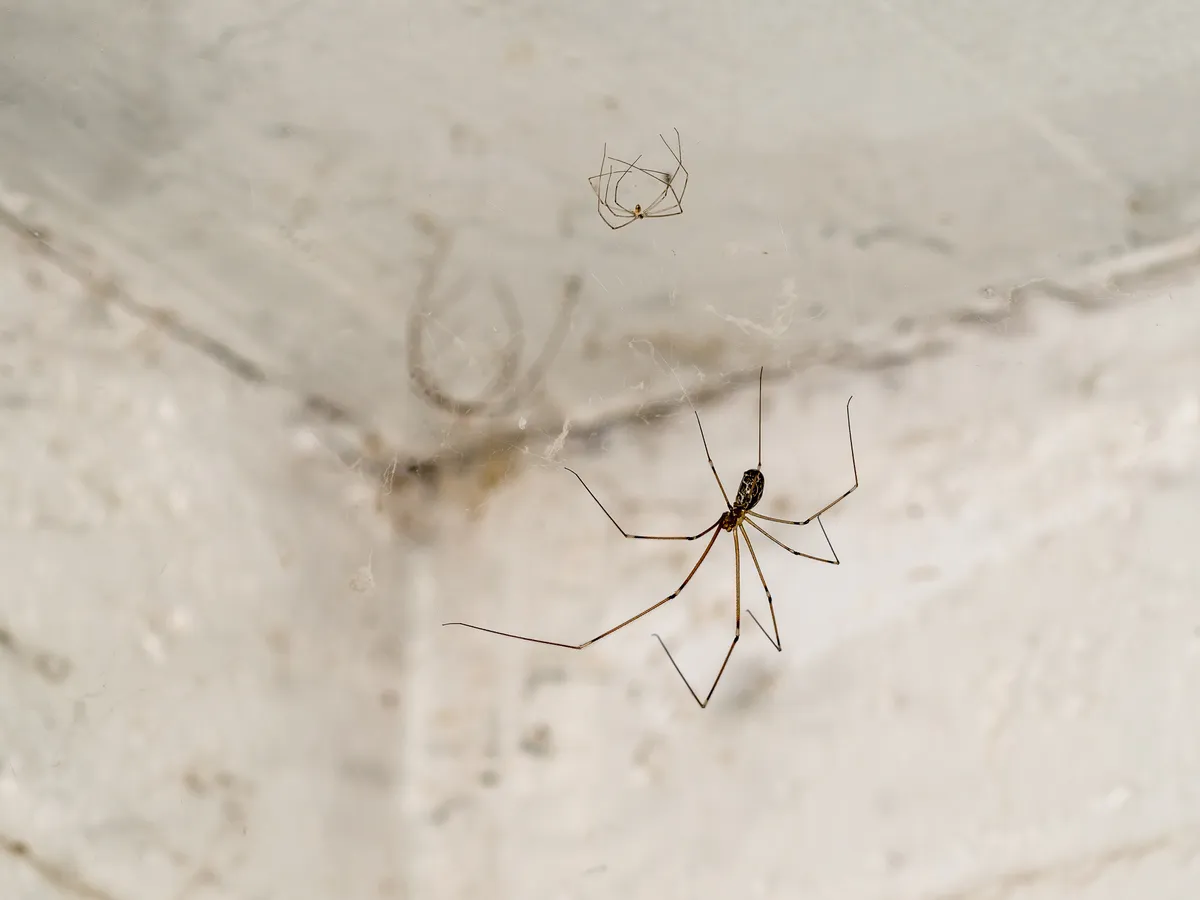
There will be very few residences across the country that do not have this spider’s chaotic and flimsy-looking webs adorning at least a few corners. But despite the mess they leave, this delicate, long-legged spider can also provide the invaluable service of consuming other unwanted household pests and even larger spiders.
Funneler webs
Made by the labyrinth and house spiders, these arachnids spin a large sheet or closely woven silk that extends to form a long, tubular retreat at the rear. Anything becoming entangled is snatched then pulled down into the spider’s lair for a fate worse than death.
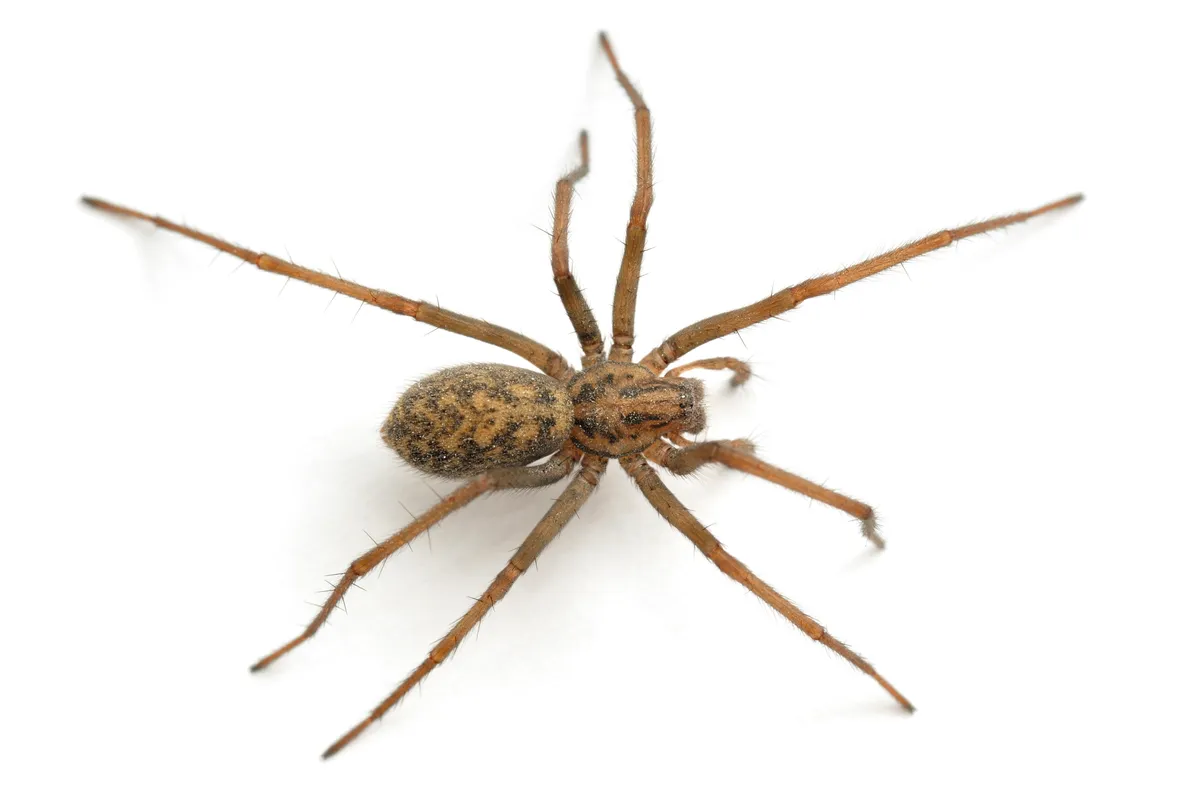
Radial webs
These webs are often found on old walls around ports in southern England and Wales, and comprise single lines of silk radiating away from a silken tube tucked into a crevice. The lines are tripwires to alert the tube web spider inside to the possibility of prey. The spider then dashes out with its green fangs, ready to bite.
Do all spiders rely on webs to catch prey?
The zebra spider does not have to rely on a web, taking a more proactive approach to catching its prey. Its short legs are used to spring into the air before landing on its chosen victim. Hanging around on sunny fences and walls, zebra spiders can leap over 10 times their body length.
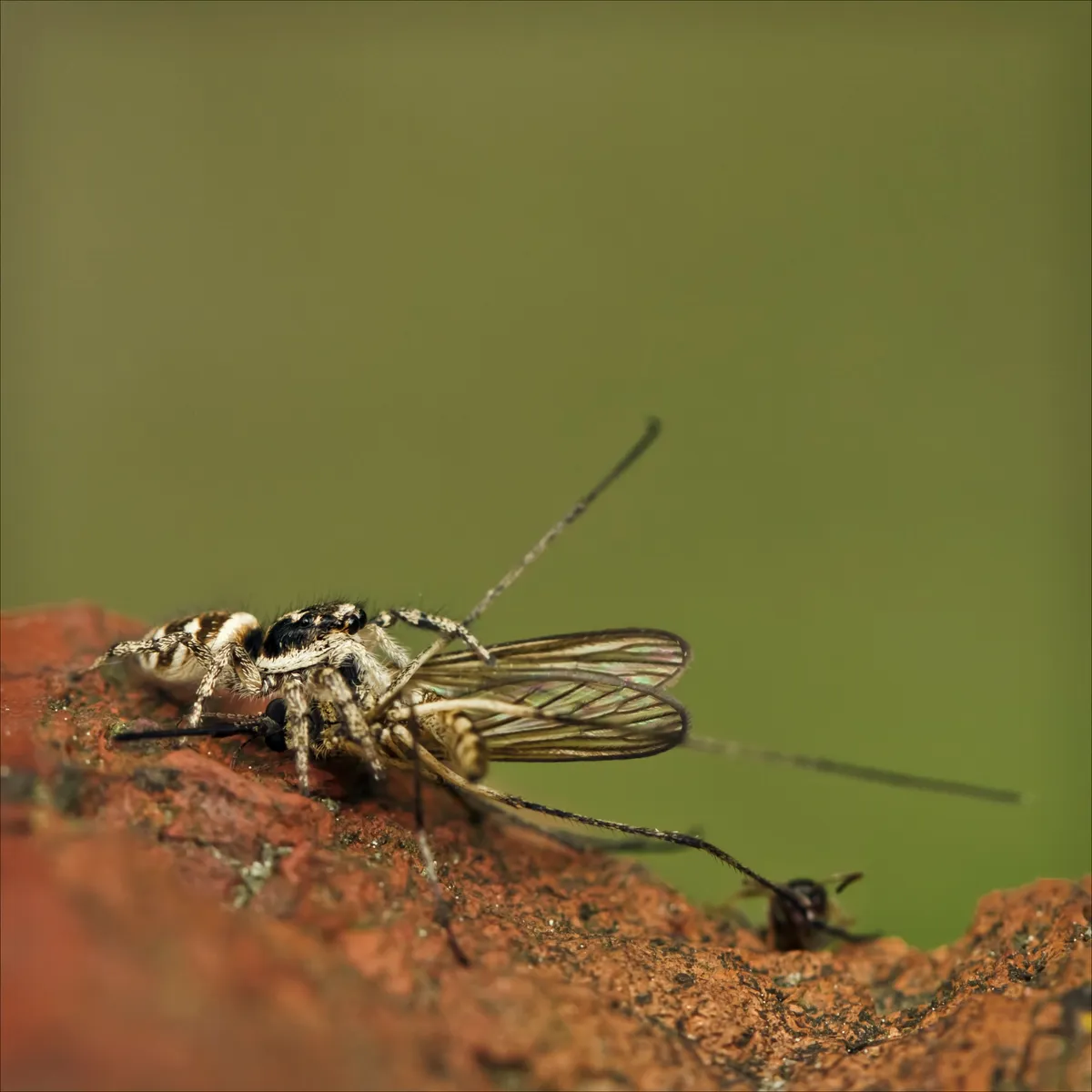
Best places to see spider webs in the UK
RSPB Arne
These protected lowland heaths in Dorset are rich in spiders, with over 250 species recorded here, including the very rare ladybird spider.
Redgrave and Lopham Fen NNR
Straddling the River Waveney, which sits between Norfolk and Suffolk, this reserve is home to the fen raft spider, a rare semi-aquatic species that hunts on or just below the surface of the water.
WWT London Wetland Centre
The grasslands around the reserve in Barnes hold a good population of wasp spiders. This large and recent colonist forms orb webs, with a distinct zig-zagged design.
Torquay
The mild winter climate of the English Riviera makes it one of the best places to look for the much-vilified false widow spider.
BBC Bristol Headquarters
The low walls around BBC Broadcasting House in Bristol are a good place to seek the green-fanged tube web spider, a Mediterranean import and tripwire specialist that hides in silk-lined crevices.
Main image: A web with dew at dawn. ©Anton Petrus/Getty

